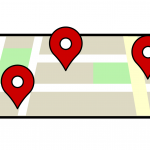7 Ways to Say No at Work Without Feeling Bad
“No” is such a tiny little word. So why is it so hard for us to say?
When it comes to turning down a request at work, you might worry about seeming unhelpful, getting in trouble, or creating an awkward office atmosphere.
However, you can’t say yes to everything you’re asked to do. Whether it’s looking over a report for someone or arranging the next Christmas party, sometimes you just can’t do it.
That’s where learning how to say no comes in.
Want to start turning down requests without batting an eye? Keep reading for seven winning ways to say no–without feeling bad about it.
1. Be Honest About Why You’re Saying No
Saying no to helping out at a meeting because you’re swamped with emails? Don’t be afraid to say so.
It’s easy to lie at work. One study showed that 60 percent of people lie at least once during a ten-minute conversation.
However, that doesn’t mean lying is a good move. When you’re honest about your reasons for declining a request, it helps the other person to understand without making you appear mean or unhelpful.
If the request is coming from a manager, hearing about the other work you have to do might encourage them to rethink it. This could mean bringing in another member of staff to help you or assisting you in prioritizing tasks.
2. Get Straight to the Point
There’s nothing worse than beating around the bush when saying no to a request.
The best ways to say no involve getting to the point as soon as possible rather than trying to soften the blow with small talk or apologies.
If there’s something you know you won’t be able to do, say so right away. Don’t say, “I’ll have to see,” “I’ll get back to you,” or “Sorry, but…”
Drawn out explanations waste the other person’s time. They’re probably already short on time if they’re asking you for help!
If you tend to get nervous and ramble when saying no, try preparing a few responses in advance. For example, “Sorry, I won’t be able to do that. I’m too busy with my own work.”
3. Say No Face-To-Face
When you’re anxious about a conversation, it’s tempting to resort to email – even if the recipient works at the desk next to you.
This is a big no-no. It’s hard to communicate clearly via email, and your response could be misconstrued as rude or short. In fact, face-to-face meetings are shown to be 35 times more successful than emails.
So instead of spending hours perfecting your “no” via email, head over to see your coworker. Make your response clear, and end with a friendly smile to show that there aren’t any hard feelings.
You won’t always be able to say no via email, so it’s best to practice in the real world now.
4. Find Someone Else to Help
After you’ve said no, the person you’re speaking to still needs help. They’ll respond better to your refusal if they know where to get it.
Make your “no” a little easier to take by pointing your coworker in the direction of someone who can help. For example, “I’m no good with spreadsheets, but I can give you the details for Helen in accounting. She’ll be happy to take a look.”
It might only take you a few seconds to identify the right person for the job. But it could make a huge difference to how well your “no” is received.
See? It is possible to say no and still help out without compromising your own time.
Just make sure you don’t get in the habit of pushing all unwanted tasks onto coworkers. This won’t win you any friends in the office, either.
5. Show That You Appreciate Being Asked
When someone asks you to do something, it indicates that they trust and respect you. It’s important to show you appreciate this.
If the boss assigns you to a large side project that you don’t have time for, be sure to mention how glad you are that he chose you. This ensures that you don’t appear ungrateful for opportunities and means you’ll still be asked to take part in future projects.
Sometimes a simple “no” might seem too curt. It could also deter coworkers from asking you anything at all.
Being asked to do something is a compliment. So make it clear that you know that–even if you have to say no this time.
6. Don’t Make Promises You Can’t Keep
It’s easy to avoid the awkwardness of saying no by saying something like, “I’ll get to it later,” or, “I can do it next week.”
When you make promises you can’t keep, you’re creating needless stress for yourself. You’ll also likely end up letting the other person down.
If you aren’t able to do something, just say so. The other person will respect you more for it.
You also won’t be struggling to juggle a million things, and there’s less risk of missing important deadlines.
7. Be Firm If You’re Asked Again
Do you have that one coworker who feels the need to keep asking, even after you’ve said no?
Being firm and assertive is key here. If you’ve already said no once, keep your second response short and to the point. For example, “Like I said, I won’t be able to do that. Please don’t ask me again.”
Don’t worry about appearing too short. There are only so many ways to say no!
Best Ways to Say No At Work
There are loads of ways to say no without feeling bad. The key is to be assertive and avoid making promises you can’t keep.
If you can help the other person by pointing them towards someone else who’s better suited to the job, that’s great. If you can’t, don’t feel obliged to try.
Remember, there’s nothing wrong with saying no. In fact, saying no is a sign that you know how to make good decisions, prioritize tasks, and turn down projects that aren’t right for you.
Want more self-improvement tips to improve your confidence? Check out our blog.





